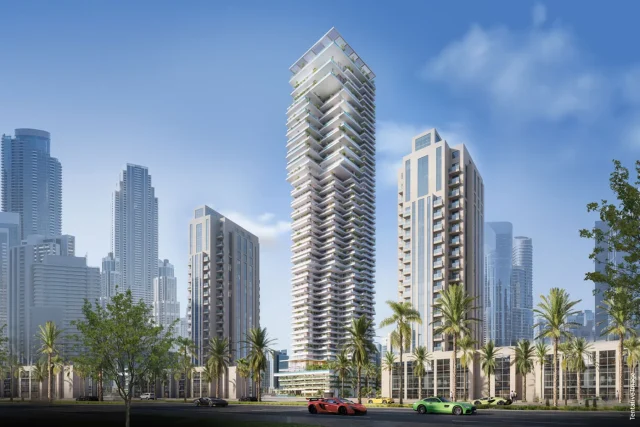
Record-Breaking Year for Dubai Real Estate
The real-estate sector in Dubai has smashed previous benchmarks, with sales reaching AED 559.4 billion by the end of October 2025 — surpassing the full-year total of AED 522.1 billion in 2024.
Here’s a deep dive into the trends, drivers, and what this means for investors, residents and the global real-estate community.
The Numbers: Volume, Value and Segments

Overall Activity
- In the first ten months of 2025, there were 178,244 property transactions in Dubai, leading to AED 559.4 billion in value.
- October alone recorded 19,875 transactions worth AED 59.4 billion.
- For comparison, 2024 saw 180,900 transactions and AED 522.1 billion in sales.
Breakdown by Property Type
- Apartments: In October 2025, 16,238 deals were recorded worth AED 31 billion — a 3.4 % rise in volume year-on-year.
- Villas: 2,549 transactions in October worth AED 15.5 billion — volume down 36.8 % compared with October last year.
- Land/plots: 399 plots sold in October for AED 11 billion, up 23.9 % year-on-year.
- Commercial property: 689 transactions in October worth AED 1.9 billion — up 61.7 % year-on-year.
Price Dynamics
- The average price per square foot rose to AED 1,692, up 6.7 % year-on-year.
- The market shows both broad-based demand and price appreciation across segments.
Leading Locations
- By value in October: Business Bay led with AED 3.2 billion from 1,177 transactions.
- Followed by Dubai Investment Park Second (AED 2.6 billion, 921 deals).
- By volume: Jumeirah Village Circle (JVC) recorded 1,685 transactions worth AED 2.5 billion.
- Some ultra-luxury deals: a villa in Jumeirah Second sold for AED 220 million, and an apartment at Bulgari Lighthouse Dubai (Island 2) fetched AED 155 million.
What’s Driving the Boom?
Foreign Investor Confidence
Dubai continues to attract international capital thanks to its global connectivity, tax-friendly environment, visa incentives and resilient economy. The data show rising off-plan and ready-market investment from overseas buyers.
Off-Plan & New-Build Dominance
First-sales from developers are dominating activity: in October, 13,926 first-sales worth AED 38.7 billion versus 5,949 resale deals worth AED 20.7 billion.
This means the pipeline of new developments is not just large — it’s actively being absorbed.
Diversified Property Types & Segments
While apartments remain dominant, there’s strong growth in land/plots and commercial assets. Investors seem to be broadly exploring different types of real estate — from land banking to commercial holdings.
Government & Regulatory Support
Policies, transparency, and infrastructure in Dubai support real-estate growth: from streamlined ownership laws to strong data capture (e.g., via DXB interact). As one analyst put it: “Dubai remains one of the best global real-estate markets for both end-users and investors.”
Market Psychology & Momentum
When sales break records, a self-reinforcing momentum often sets in: rising prices attract more buyers, which further drives demand. The fact that 2025 has already beaten 2024’s full-year value by October underscores this momentum.
Risks, Cautions & Challenges

Even in booming markets, prudent investors should remain aware of the caveats:
- Value versus volume trade-off: When average prices rise, fewer units may be sold, or buyers may become more cautious in certain segments (e.g., very-high-end villas).
- Supply pipeline risk: With many off-plan projects launching, there is a risk of oversupply or delays, which could impact value or rental yields.
- Economic / macro-risk: While Dubai is relatively resilient, property markets always face headwinds — interest-rate rises, global economic slowdown, local regulatory changes.
- Segment-specific dynamics: Villas, for example, saw a big drop in volume in October (-36.8 %) even while value remains high. That may signal some market cooling in that sub-segment.
- Location matters: The headline numbers are strong, but returns and liquidity will vary greatly by district, building quality, developer reputation, and asset type.
As CEO of fäm Properties, Firas Al Msaddi, warned: “It doesn’t mean every developer will win just because the market is healthy. Nor does it mean investors can make impulsive or uninformed decisions and expect success.”
Implications: For Investors, Residents & Developers
For Investors
- With record sales and rising prices, Dubai is firmly on the radar of global real-estate investors.
- However: Investor success will depend on selecting the right asset (location, type, developer, payment terms) — not simply buying because numbers look good.
- Off-plan sales dominance suggests potential upside, but also requires evaluation of delivery risk, developer track record and market absorption.
- Rental yield considerations: Rising purchase prices might squeeze yields if rents don’t keep up — so yield analysis is critical.
For End-Users / Home Buyers
- Strong residential market means value appreciation potential (for homeowner occupiers).
- But buyers should consider long-term living needs, neighbourhood quality, amenities, infrastructure and commuting.
- High-volume areas (apartments) provide more choice; villa market may be more selective in upcoming months.
For Developers & Market Stakeholders
- Developers can capitalise on strong demand, especially in mid- to high-end segments and off-plan projects.
- But they must deliver on quality, timeliness, transparency and amenities — with buyer expectations high.
- Government & regulators will look to maintain sustainable growth, avoid overheating, and manage oversupply risks.
Outlook: What’s Next?

- Given the pace of sales by October, 2025 is poised to become the best-ever year for Dubai real estate.
- If current trends continue, annual sales could exceed AED 600 billion easily — assuming Q4 maintains momentum.
- Price growth likely to continue, though perhaps at a slightly moderated rate rather than the explosive increases seen earlier.
- Developers may shift strategy: more off-plan launches, more payment-plan flexibility, more mid-market product rather than purely luxury.
- Regions outside the traditional hotspots may see more spill-over demand: suburban/beyond-Dubai-main areas, or alternative typologies (plots, commercial).
- Rental market and yield trends will be closely watched: price increases good, but rental growth must follow for investor returns to remain attractive.
- Regulatory / macro side: Interest-rates, global capital flows, visa/immigration policy, construction costs and infrastructure will all matter.
Final Thoughts
The staggering AED 559.4 billion in sales by end-October 2025 mark a landmark moment for Dubai’s real-estate market. The city has crossed a threshold: what once looked like growth has now become scale. The numbers reflect confidence — from local buyers, from expatriates, and from institutional investors alike.
But scale also brings complexity. The opportunity is substantial — but so are the risks if one does not do proper due diligence. Smart investors will look beyond the headline figure, interrogate sub-markets, analyse yields, timelines, developer credibility and long-term sustainability.
For residents, the booming market means choice, but also competition and higher purchase prices. For developers, it’s a golden window — but one where performance and execution will define winners and losers.
In short: Dubai is no longer simply a rising market. It is now a mature contender on the global real-estate stage. And in such an environment, the best returns will go to those who navigate it with clarity, strategy and patience.





Leave a Reply